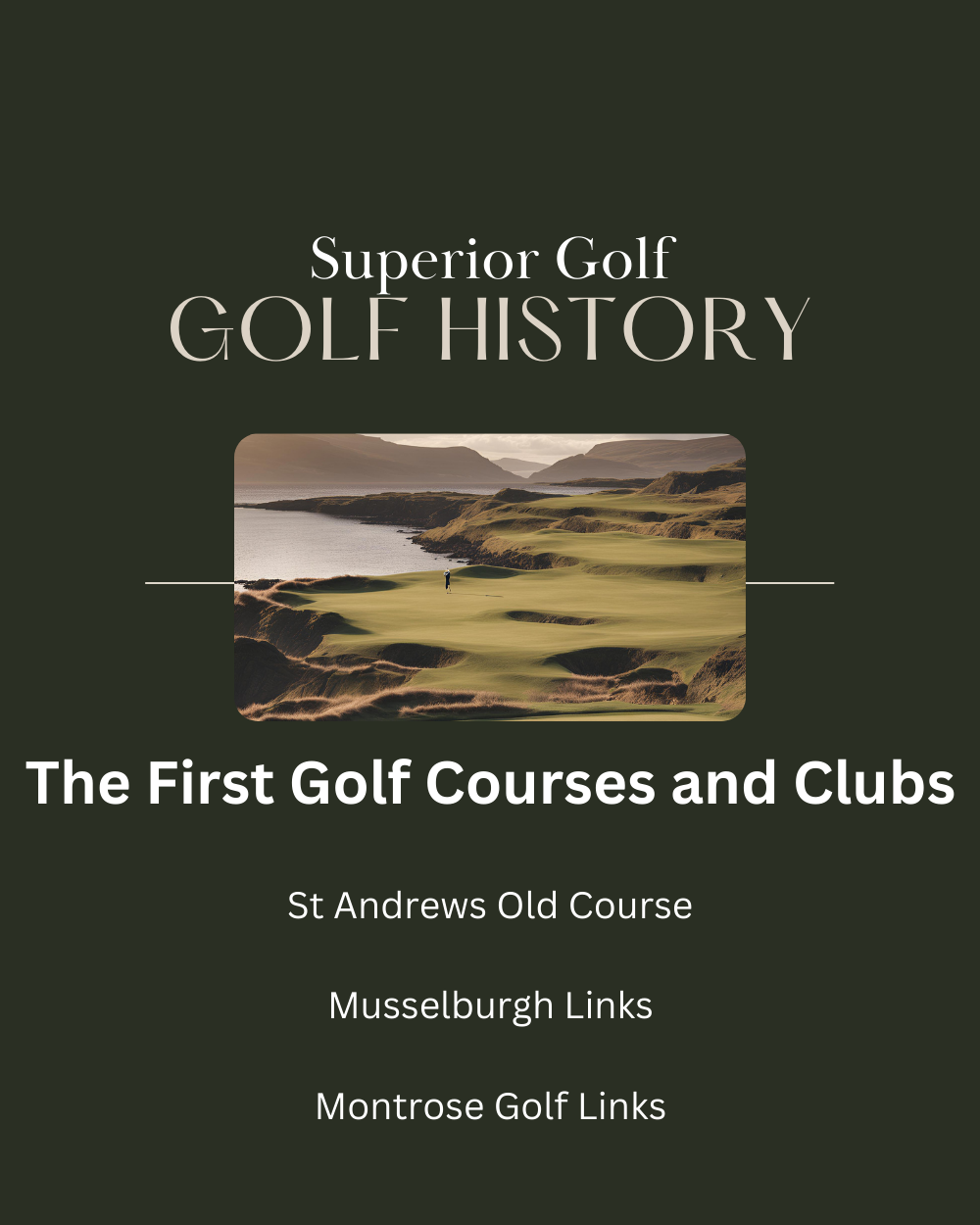The First Golf Courses and Clubs: Golf’s history is rich and deep, especially in Scotland. This is where golf as we see it today began. Scotland is home to the world’s oldest golf courses that are still in use. Famous spots like Carnoustie, started in 1842, and St Andrews, known for golf since 15521, stand out. These historic links are a magnet for history lovers and golfing pioneers.
They love to explore the places where legends once played. Today, anyone can visit these famous courses. They let golfers touch the sport’s ancient roots.
Consider North Berwick West Links or the iconic St Andrews Old Course. Each offers a peek into golf’s beginnings1. Courses like Musselburgh Links and Montrose Golf Links have shaped golf’s history1. Beyond the game, these clubs are portals to Scotland’s golf legacy and the old playing fields.
Key Takeaways
- Scotland is home to some of the oldest golf courses in the world, including St Andrews and Carnoustie1.
- Historical clubs like Musselburgh Links and Montrose Golf Links offer a glimpse into the past of this centuries-old sport1.
- Public accessibility to these historical courses allows today’s golfers to walk in the footsteps of the sport’s pioneers.
- Each course provides a unique experience that reflects the game’s long-standing traditions and strategic complexities.
- The stunning coastal locations of these courses add an additional layer of charm and challenge for golf enthusiasts.
Origins of the Game in Scotland
Golf started in Scotland during the 15th century. It began on the east coast, which is now key to golf’s history.
The Beginnings in the 15th Century
In 1457, King James II of Scotland stopped people from playing golf. He thought it was distracting from archery, which was important for defense2. But in 1502, King James IV changed his mind and supported golf2. By 1744, the first golf rules were written in Edinburgh. This step strengthened Scotland’s impact on golf2. The very first 18-hole course was made at St Andrews in 17643.
Importance of St Andrews
St Andrews is crucial to golf’s story. People see it as the heart of golf, starting back in 15522. Originally, St Andrews had eleven holes in 1764, but it changed to eighteen holes4. The Royal & Ancient Golf Club, created in 1834, helped shape today’s golf3. St Andrews continues to attract golfers from all over the world.
The Role of Royal Patronage
Royals greatly helped golf’s growth. Mary, Queen of Scots, is famous for playing golf. She might have brought golf to France. The word ‘caddie’ is said to come from her French aides3. Royal acceptance helped start clubs like the Royal Blackheath in 17663. Kings and queens enjoying golf helped the Scottish tradition thrive.
Notable Early Golf Courses
A few early golf courses have had a big impact on the game. These famous courses have amazing stories. They’ve hosted important tournaments, becoming an essential part of golf’s history.
St Andrews Old Course
The St Andrews Old Course started in 1552. It’s known as the world’s oldest, called the “Home of Golf”5. It held The Open Championship 30 times, showing its big role in golf6. This course led the way for others with its design and history.
Musselburgh Links
Musselburgh Links is one of the oldest courses, from 16725. It set the golf hole size still used today5. Playing there links you directly to golf’s start.
Montrose Golf Links
Montrose started in 1562, standing strong over the years5. It’s known for natural defenses and royal recognition5. Playing Montrose mixes challenge with history.
Elie and Earlsferry Links
Elie and Earlsferry dates back to 1589, offering scenic golf tied to history5. Some holes are as old as the 18th century, showing this course’s long history5. It shows how old golf designs continue to charm.
These courses mean more than just playing spots; they’re places where golf grew. Visiting them lets you feel golf’s true spirit and heritage.
FAQ
What are the oldest golf courses in Scotland?
How did golf originate in Scotland?
Why is St Andrews significant in the history of golf?
How did royal patronage influence the development of golf?
What makes Musselburgh Links historically significant?
What is notable about Montrose Golf Links?
What is the historical importance of Elie and Earlsferry Links?
Source Links
- https://www.glencorgolf.com/blog/top-10-oldest-golf-courses-in-the-world/
- https://lomondgolftours.com/history-of-golf-in-scotland-uncovering-the-origins/
- https://www.historic-uk.com/HistoryUK/HistoryofScotland/The-History-of-Golf/
- https://en.wikipedia.org/wiki/Golf_in_Scotland
- https://www.oldest.org/sports/golf-courses/
- https://www.golfmonthly.com/courses/worlds-most-famous-golf-courses

